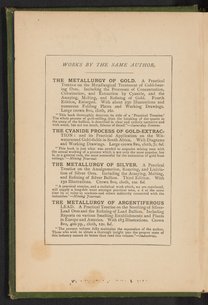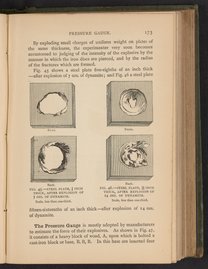A Handbook on Modern Explosives
A Practical Treatise on the Manufacture and use of Dynamite, Gun-Cotton, NitroGlycerine, and other Explosive Compounds, Including Collodion-Cotton, with Chapters on Explosives in Practical Application
- 1897

Rights
Download all 35 images
PDFZIPof full-sized JPGsDownload selected image
Small JPG1200 x 1635px — 424 KBFull-sized JPG2277 x 3103px — 1.3 MBOriginal fileTIFF — 2277 x 3103px — 20.3 MBSecond edition volume describing explosive compounds of the late 1890s, with a particular focus on nitroglycerine compounds and varieties of gun-cotton. Includes discussion of explosive manufacture, detail of their physical and chemical properties, and an account of modern explosives of various types used around the world. The work is fully illustrated and includes four appendices. Select illustrations and the work's front matter have been digitized.
| Property | Value |
|---|---|
| Author | |
| Publisher | |
| Place of publication | |
| Format | |
| Genre | |
| Extent |
|
| Language | |
| Subject | |
| Rights | Public Domain Mark 1.0 |
| Credit line |
|
Institutional location
| Department | |
|---|---|
| Collection | |
| Physical container |
|
Related Items
Cite as
Eissler, M. “A Handbook on Modern Explosives.” London, England: Crosby Lockwood and Son, 1897. TP270 .E57 1897. Science History Institute. Philadelphia. https://digital.sciencehistory.org/works/wwql14y.
This citation is automatically generated and may contain errors.
/
Rights
Download all 35 images
Searchable PDFmay contain errorsZIPof full-sized JPGsDownload selected image
-
Keyboard Shortcuts
Previous image shift + or , Next image shift + or . Pan image Zoom in + or shift + Zoom out - or shift + Zoom to fit 0 Close viewer esc Also
Mouse click to zoom in; shift-click to zoom out. Drag to pan. Pinch to zoom on touch.







































